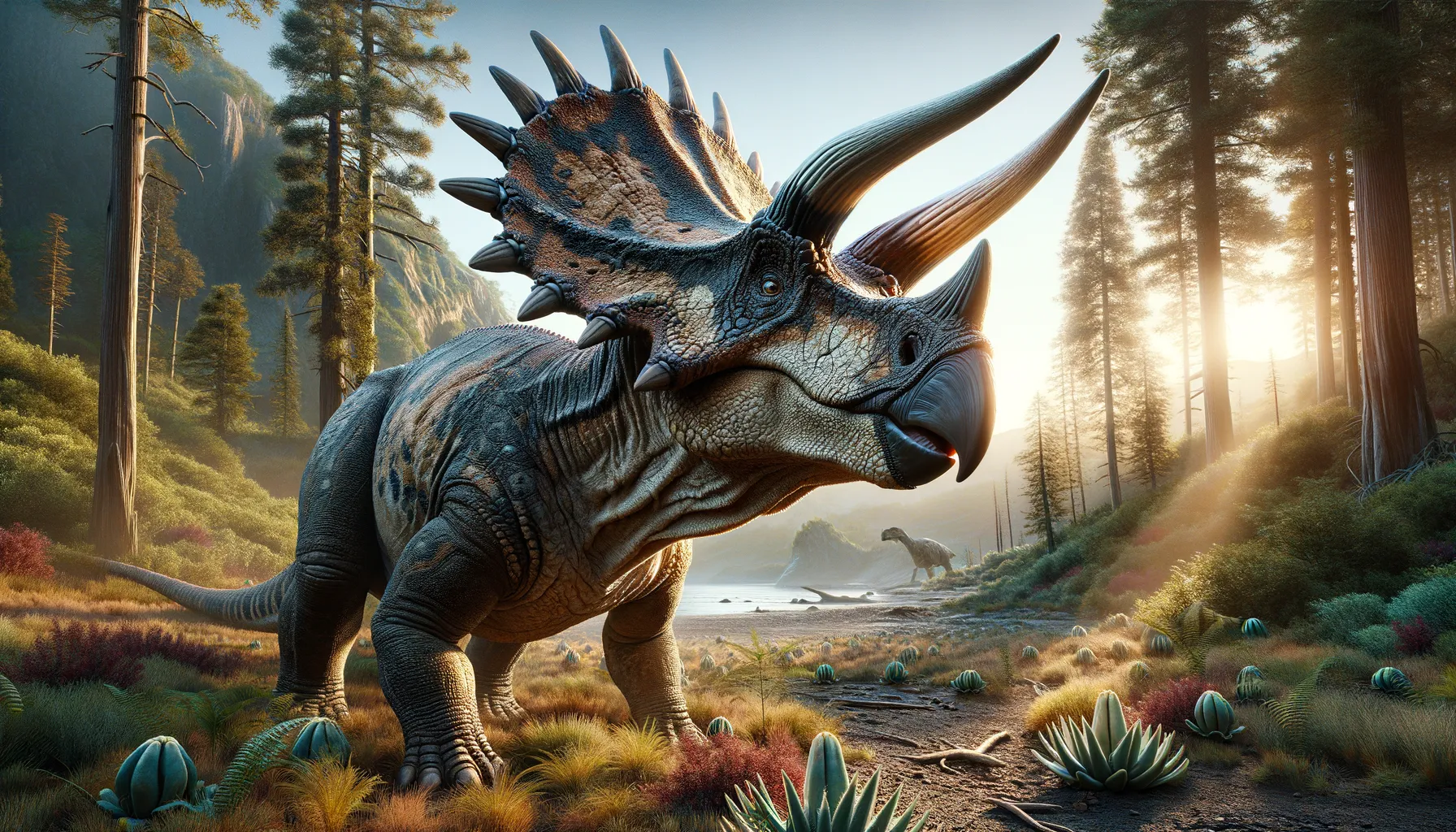
Agujaceratops
Horned giant of the Cretaceous era.
Period
Cretaceous
Length
About 20 feet long.
Height
Around 6 feet at the shoulder.
Weight
Approximately 3 tons.
Agujaceratops was a herbivorous dinosaur known for its robust, horned appearance, resembling a modern-day rhinoceros. Living during the Late Cretaceous period, it roamed what is now North America. This dinosaur had a distinctive large frill and horns above its eyes, likely used for defense and display. The fossil remains found in Texas give valuable insight into its lifestyle and the environment of its time.
Diet
Agujaceratops was a herbivore, primarily feeding on ferns, cycads, and other low-lying vegetation. Its beak-like mouth was well-adapted to clipping tough plant material, making it an efficient grazer.
Hunting
Being a herbivore, Agujaceratops did not hunt. Instead, it foraged for plant material, using its strong jaws to handle tough vegetation.
Environmental challenges
Agujaceratops faced environmental challenges like fluctuations in climate, leading to changes in vegetation availability. Predation by carnivorous dinosaurs posed a constant threat, as did disease and competition for food. Natural disasters, such as floods and volcanic activity, also impacted its habitat.
Speed
Slow-moving due to its hefty build.
Lifespan
Estimated to live around 70 years.
First discovery
First discovered in 1938 in the Big Bend area of Texas.
Fun Facts
- Agujaceratops was a horned dinosaur that roamed what is now Texas about 80 million years ago.
- It belonged to the group of dinosaurs known as ceratopsians, which are famous for their horns and frills.
- Agujaceratops had a large frill at the back of its head, which may have been used for display or protection.
- This dinosaur was a herbivore, meaning it only ate plants, and it likely fed on the lush vegetation of its time.
- The first fossils of Agujaceratops were discovered in the 1930s, but it wasn't until 2005 that it was officially named and described.
- Agujaceratops shares its name with the Aguja Formation, a region rich in dinosaur fossils where it was originally found.
- Like many horned dinosaurs, Agujaceratops likely lived in herds, which helped protect it from predators.
Growth and Development
Young Agujaceratops likely grew rapidly during their early years to avoid predation. This growth slowed as they reached maturity, allowing energy to be conserved for reproduction. Physical changes, such as horn development, continued into adulthood and likely played roles in mating displays and defense.
Habitat
Agujaceratops lived in lush floodplain environments rich in plant life. This provided ample food sources and cover from predators. The region's rivers and lakes offered resources for drinking and supported a thriving ecosystem. Their habitat would have been populated with a diverse range of other dinosaur species.
Interaction with other species
Agujaceratops coexisted with other herbivorous and carnivorous dinosaurs. It likely moved in herds, which provided safety in numbers from predators. Its interactions with other species were mostly non-aggressive unless threatened, as its horns and frill offered defensive capabilities.
Natural lifespan
Agujaceratops potentially lived up to 70 years, barring predation or disease.
Reproduction
The species is believed to have reproduced by laying eggs, which were buried or guarded until hatching. Juvenile Agujaceratops were likely dependent on adults for protection against predators. Social behaviors could have included shared nesting sites or coordinated parental care strategies.
Social behaviour
Agujaceratops may have lived in herds, which provided social interaction and protection. Herding would have played a crucial role in defense against predators. Their social structure might have included a hierarchy based on size or horn development.
Fossil locations
Fossils of Agujaceratops have been primarily discovered in the Big Bend region of Texas. The first remains were identified in the Aguja Formation, which gave the dinosaur its name. These discoveries are crucial for understanding the ecosystem of the Late Cretaceous in North America.
